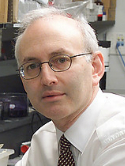Recombinant methionyl human stem cell factor and Filgrastim for peripheral blood progenitor cell mobilization and transplantation in non-Hodgkin's lymphoma patients — Results of a phase I/II trial Journal Article
| Authors: | Moskowitz, C. H.; Stiff, P.; Gordon, M. S.; McNiece, I.; Ho, A. D.; Costa, J. J.; Broun, E. R.; Bayer, R. A.; Wyres, M.; Hill, J.; Jelaca-Maxwell, K.; Nichols, C. R.; Brown, S. L.; Nimer, S. D.; Gabrilove, J. |
| Article Title: | Recombinant methionyl human stem cell factor and Filgrastim for peripheral blood progenitor cell mobilization and transplantation in non-Hodgkin's lymphoma patients — Results of a phase I/II trial |
| Abstract: | To examine the safety and efficacy of recombinant-methionyl human stem cell factor (r-metHuSCF), 38 patients with intermediate-grade or immunoblastic high-grade non-Hodgkin's lymphoma who were eligible for autologous transplantation were randomized to receive r-metHuSCF (5, 10, 15, or 20μg/kg/d) plus Filgrastim (10μg/kg/d) or Filgrastim (10μg/kg/d) alone to mobilize peripheral blood progenitor cells. Subcutaneous administration of r-metHuSCF was well tolerated in conjunction with a multi-agent pre- medication regimen; local injection site reactions were the most commonly seen adverse event. The total mononuclear cell count, CD34+ cell content, granulocyte-macrophage colony-forming cells (GM-CFC), and burst-forming units-erythroid (BFU-E) per kilogram in the apheresis product was similar when all patients were analyzed by treatment cohort and mobilization regimen (Filgrastim or r-metHuSCF in combination with Filgrastim); however, when prior chemotherapy was taken into account in a supplementary analysis, clinically important differences were observed. Extensive prior therapy was defined as the amount of exposure to specific stem cell toxic chemotherapeutic agents that patients received. These agents include procarbazine, nitrogen mustard, melphalan, nitrosoureas (≤2 cycles of any of these drugs) or greater than 7.5 g of cytosine arabinoside. In these patients, there was an increased number of CD34+ cells (1.76 v 0.28 x 106/kg), GM-CFC (20.5 v 5.0 x 104/kg), and BFU-E (36.9 v 8.9 x 104/kg) in patients receiving r-metHuSCF and Filgrastim (N = 18) compared with Filgrastim alone (N = 5). These patients also had a decreased time to an untransfused platelet count of 20 x 109/L that was 10.5 days shorter in the patients who received r-metHuSCF and Filgrastim (12.5 v 23 days(. These differences were not found to be statistically significant, possibly because of small size, but are clinically important. |
| Keywords: | adult; aged; middle aged; unclassified drug; human cell; major clinical study; clinical trial; drug efficacy; drug safety; cytarabine; stem cell factor; phase 2 clinical trial; etoposide; antineoplastic combined chemotherapy protocols; cyclophosphamide; melphalan; cell differentiation; carmustine; chlormethine; procarbazine; stem cell; nonhodgkin lymphoma; mononuclear cell; drug therapy, combination; peripheral blood stem cell; lymphoma, non-hodgkin; recombinant proteins; hematopoietic stem cells; thrombocyte count; hematopoiesis; leukocyte count; phase 1 clinical trial; recombinant granulocyte colony stimulating factor; bone marrow transplantation; colony-forming units assay; filgrastim; nitrosourea derivative; leukapheresis; humans; human; male; female; priority journal; article; recombinant methionyl stem cell factor; burst forming unit |
| Journal Title: | Blood |
| Volume: | 89 |
| Issue: | 9 |
| ISSN: | 0006-4971 |
| Publisher: | American Society of Hematology |
| Date Published: | 1997-05-01 |
| Start Page: | 3136 |
| End Page: | 3147 |
| Language: | English |
| PUBMED: | 9129016 |
| PROVIDER: | scopus |
| DOI: | 10.1182/blood.V89.9.3136 |
| DOI/URL: | |
| Notes: | Article -- Export Date: 17 March 2017 -- Source: Scopus |
Altmetric
Citation Impact
BMJ Impact Analytics
Related MSK Work





